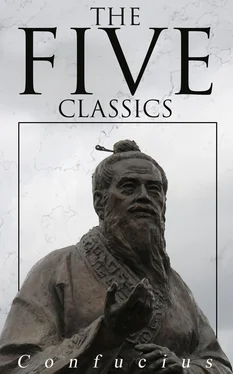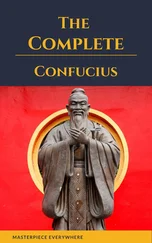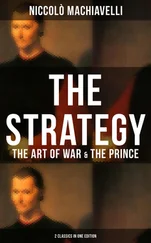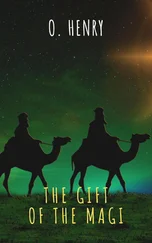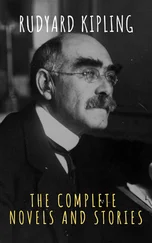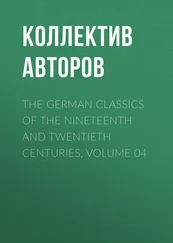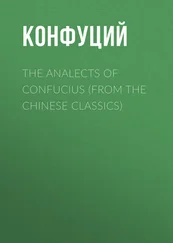What 'the great man sets a value on being the due mean and the correct place,' his decision in any matter of contention is sure to be right.
8.That 'multitude' is given here as if it were the meaning of the name Sze arose, probably, from there being but one undivided line in the figure. That is the symbol of the general, all the other lines, divided, suggest the idea of a multitude obedient to his orders. The general's place in the centre of the lower trigram, with the proper correlate in line 5, suggests the idea of firmness and correctness that dominates in the hexagram. But in the last sentence it is the ruler, and not the general of the host, who is the subject. Compare what is said of him with Mencius, I, i, chap. 3; ii, chap. 5, &c.
'Perilousness' is the attribute of Khan, the lower trigram, and 'docility,' or 'accordance with others,' that of Khwăn, the upper. War is like 'poison' to a country, injurious, and threatening ruin to it, and yet the people will endure and encounter it in behalf of the sovereign whom they esteem and love.
9.There is some error in the text here,--as all the critics acknowledge. I have adopted the decision of K û Hsî, which by a very small change makes the whole read consistently, and in harmony with other explanations of the Thwan. 'The inferiors' are the subjects of all the other lines gathering round their superior, represented in the fifth line.
'The way has been exhausted:'--they do not seek to promote and enjoy union till it is too late. The sentiment is the same as that in the lines of Shakespeare about the tide in the affairs of men.
10.The weak line' is said to occupy 'its proper position,' because it is in the fourth,--an even place. The 'responding' on the part of all the other lines above and below is their submitting to be restrained by it; and this arises simply from the meaning which king Wăn chose to attach to the hexagram.
But the restraint can only be small. The attributes of the two parts of the figure do not indicate anything else. The undivided line represents vigour and activity, and such a line is in the middle of each trigram. There cannot but be progress and success.
It is not easy to explain the symbolism of the last paragraph in harmony with the appended explanations. What Kh ăng-ȝze, Wang Făng, and other scholars say is to this effect:--Dense clouds ought to give rain. That they exist without doing so, shows the restraining influence of the hexagram to be still at work. But the other and active influence is, according to the general idea of the figure, continuing in operation;--there will be rain ere long. And this was taking place in the western regions subject to the House of K âu, which still was only a fief of Shang. It was not for the inferior House to rule the superior. K âu was for a time restrained by Shang. Let their positions be reversed by K âu superseding Shang, and the rain of beneficent government would descend on all the kingdom. This seems to be the meaning of the paragraph. This is the answer to the riddle of it. Confucius, in his treatise on the Thwan, hints at it, but no Chinese critic has the boldness to declare it fully.
11.'(The symbol of) weakness' in paragraph 1, according to Wang Shăn-ȝze (Yüan dynasty), is line 3, urged by the two strong lines below, and having to encounter the three strong lines above. Hû Ping-wan (also of the Yüan dynasty) says that the whole of the lower trigram, Tui, partaking of the yin nature, is the symbol of weakness, and the whole of Kh ien that of strength. The K eh- K ung editors say that, to get the full meaning, we must hold both views.
Paragraph 2 has been sufficiently explained on the Thwan itself.
Paragraph 3 has also been explained; but there remains something to be said on the Chinese text for 'occupies the God-given position,' or, literally, 'treads on the seat of Tî.' Canon McClatchie has--'The imperial throne is now occupied.' I think that 'the seat of Tî' is synonymous with 'the seat of Heaven,' in paragraph 2 of this treatise on hexagram 5. If Confucius, or whoever was the writer, had before him the phrase as it occurs in the Shû, I, 12, the force of Tî will depend on the meaning assigned to it in that part of the Shû. That the fifth line occupies the place of authority is here the only important point.
12.There is nothing to be said on the explanation of the Thwan here beyond what has been noticed on the different paragraphs of the Text. Canon McClatchie translates:--'The Thwan means that Heaven and Earth have now conjugal intercourse with each other .... and the upper and lower (classes) unite together.' But in both clauses the Chinese characters are the same. Why did he not go on to say--'the upper and lower classes have conjugal intercourse together;' or rather, why did he not dismiss, the idea of such intercourse from his mind altogether? Why make the Yî appear to be gross, when there is not the shadow of grossness in it? The paragraph here well illustrates how the ruling idea in all the antinomies of the Yî is that of authority and strength on the one side, and of inferiority and weakness on the other.
13.All the symbolism here springs from the trigram Khwăn occupying in the figure the inner or lower place, and Kh ien the outer or upper. It is for the inner trigram to take the initiative; p. 225 but how can earth (symbolised by Khwăn) take the place of heaven (symbolised by Kh ien)? As in nature it is heaven that originates and not earth, so in a state the upper classes must take the initiative, and not the lower.
14.To understand the various points in this commentary, it is only necessary to refer to the Text of the hexagram. The proper correlate of line 2 is line 5, and I have said therefore that it 'responds to (the corresponding line in) Kh ien.' The editors of the Khang-hsî edition, however, would make the correlate to it all the lines of Kh ien, as being more agreeable to the idea of union.
I do not think that a second paragraph has been lost. The p. 226 'Thung Z ăn says' is merely a careless repetition of the three concluding characters of paragraph 1.
15.The position in the fifth place indicates the dignity, and its being central, in the centre of the upper trigram, indicates the virtue, of the lord of the figure.
The strength of the lord, moreover, is directed by intelligence and his actions are always at the proper time, like the seasons of heaven.
16.The Thwan on this hexagram was so brief, that the writer here deals generally with the subject of humility, showing how it is valued by heaven and earth, by spirits and by men. The descent of the heavenly influences, and the low position of the earth in paragraph 1, are both emblematic of humility. The heavenly influences have their 'display' in the beauty and fertility of the earth.
The way of heaven is seen, e.g. in the daily declining of the sun, and the waning of the moon after it is full; the way of earth in the fall of the year. On the meaning of 'Spiritual Beings (Kwei Shăn),' see the Introduction, pp. 34, 35. It is difficult to say what idea the writer attached to the name. What he says of man's appreciation of humility is striking, and, I believe, correct.
17.What is said in paragraph 1 about the lines has been pointed out in the notes on the Text. 'Obedience' is the attribute of Khwăn, the lower trigram, which takes the initiative in the action of the figure; and here makes use of the movement, which is the attribute of K ăn, the upper trigram.
I can hardly trace the connexion between the different parts of Paragraph 2. Does it not proceed on the harmony produced by the thunderous explosion between heaven and earth, as declared p. 227 in Appendix II? Then the analogy between natural phenomena and human and social experiences comes into play.
Читать дальше
